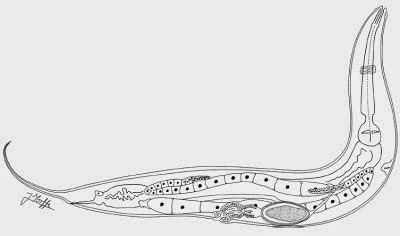Dorstenias are tropical herbaceous plants or small shrubs found predominantly
in the Africa and the Americas, but with one species from Asia. They are mostly upright succulent plants (i.e. plants that store water
in fleshy leaves and stems to help them survive periods of drought) which
produce sticky latex to deter consumption. They produce seeds in drupes (fleshy
fruit that contain a single large seed) which dry out then expel their seeds
explosively.
In a paper published in the journal PhytoKeys on 24 October 2014,
Miguel Leal of the Wildlife Conservation Society describes a new and somewhat
unusual Dorstenia from the Luama
Wildlife Reserve in eastern Democratic Republic of Congo.
The new species is named Dorstenia luamensis,
meaning ‘from Luama’ in reference to the locality where it was discovered.
While immediately recognisable as a Dorsteniafrom
its inflorescence, it has an unusual morphology, lacking succulent leaves and
stems and growing hanging from cliffs rather than upright on the ground, and
does not produce any latex.
A population of Dorstenia luamensis
on a vertical rock face. Leal (2014).
The plants were found only in a few populations in a very limited
area, and as such the species is considered to be Endangered under the terms of
the International Union for the Conservation of Nature’s Red List of ThreatenedSpecies.
See also…
Shrews (Soricidae) are small insectivorous or omnivorous Mammals found
across much of the world, the only major landmasses from which they are
absent being Australia, New Zealand and New Guinea, though they are
restricted to the northwest of South America, suggesting they are recent
arrivals in that continent...
 Two new species of parasitic Nematode from the Democratic Republic of Congo. Nematodes are probably the most numerous and specious group of animals
on Earth, though relatively few species have actually been described.
The title of...
Two new species of parasitic Nematode from the Democratic Republic of Congo. Nematodes are probably the most numerous and specious group of animals
on Earth, though relatively few species have actually been described.
The title of...
Follow Sciency Thoughts on Facebook.



